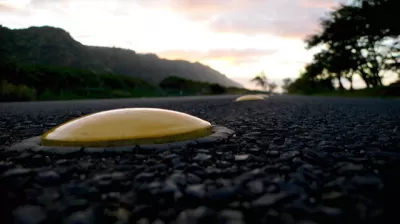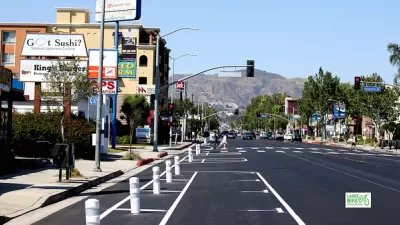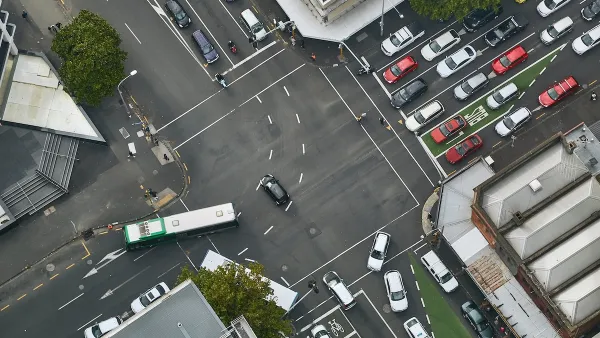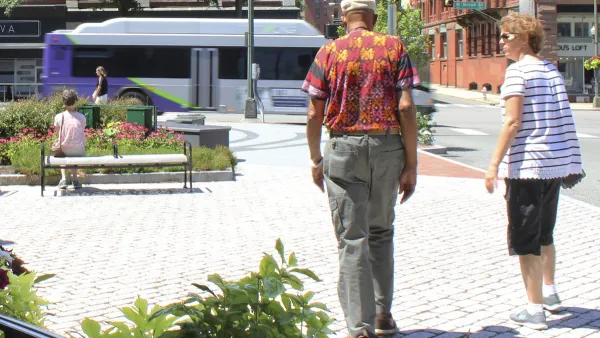A staple of the California driving experience will soon be a thing of the past.

"Botts’ Dots – the raised, rumbly markers between lanes on California’s highways and freeways – are on their way out, with Caltrans saying it will no longer maintain or install them," reports Jonathan Winslow.
Botts' Dots are named for Elbert Dysart Botts, whose research in the 1950s led to the long-term implementation of the dots, both in California and around the country.
The old technology is now being phased out, on the recommendation of federal transit officials (usually issues of pavement markings comes under the purview of the Federal Highway Administration). "Critics say the ceramic buttons aren’t reflective, don’t really help that much, mess up autonomous cars and don’t last very long," according to Winslow.
Winslow is able to find at least one driver who credits the rumble created by the raised dots from keeping them alert while driving. The state, however, has found little evidence to dispute the opinions of the feds on the matter.
There remain 20 million dots on California highways and freeways, and they'll be allowed to slowly disappear, though some cities will still use them, according to Winslow.
For more on the demise of Botts' Dots, see also coverage by Gary Richards in February and Tony Bizjak in January.
FULL STORY: Botts’ Dots, after a half-century, will disappear from California freeways, highways

Planetizen Federal Action Tracker
A weekly monitor of how Trump’s orders and actions are impacting planners and planning in America.

Maui's Vacation Rental Debate Turns Ugly
Verbal attacks, misinformation campaigns and fistfights plague a high-stakes debate to convert thousands of vacation rentals into long-term housing.

Restaurant Patios Were a Pandemic Win — Why Were They so Hard to Keep?
Social distancing requirements and changes in travel patterns prompted cities to pilot new uses for street and sidewalk space. Then it got complicated.

Charlottesville Temporarily Has No Zoning Code
A judge ordered the Virginia city to throw out its newly revised zoning code, leaving permitting for new development in legal limbo.

In California Battle of Housing vs. Environment, Housing Just Won
A new state law significantly limits the power of CEQA, an environmental review law that served as a powerful tool for blocking new development.

Boulder Eliminates Parking Minimums Citywide
Officials estimate the cost of building a single underground parking space at up to $100,000.
Urban Design for Planners 1: Software Tools
This six-course series explores essential urban design concepts using open source software and equips planners with the tools they need to participate fully in the urban design process.
Planning for Universal Design
Learn the tools for implementing Universal Design in planning regulations.
Heyer Gruel & Associates PA
JM Goldson LLC
Custer County Colorado
City of Camden Redevelopment Agency
City of Astoria
Transportation Research & Education Center (TREC) at Portland State University
Jefferson Parish Government
Camden Redevelopment Agency
City of Claremont





























